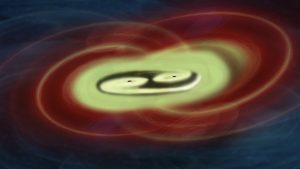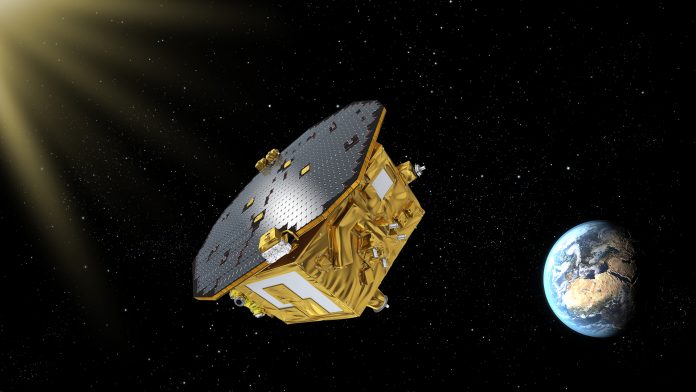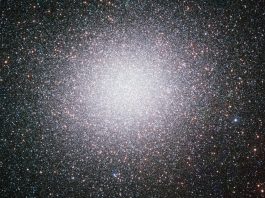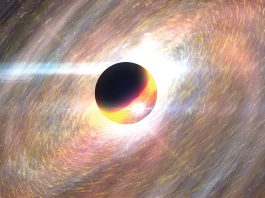Professor Philippe Jetzer, who leads the Gravitation and Astrophysics Group at the University of Zurich (UZH), discusses gravitational waves and ways to test General Relativity’s Equivalence Principle.
The Gravitation and Astrophysics Group at the University of Zurich (UTZ), Switzerland, focuses on gravitational wave astronomy, gravitational lensing, and tests of General Relativity’s Equivalence Principle. Professor Philippe Jetzer, who leads the group, has been working int this area for a number of years and is involved in numerous efforts and projects to further our understanding of these interesting phenomena.
The Innovation Platform spoke with Jetzer about his work, including the European Space Agency’s LISA Pathfinder and LISA missions and the work taking place at LIGO and VIRGO, and how, if made, some discoveries could have profound impacts on fundamental physics and our knowledge of the Universe.
What would you say were the biggest successes of the Lisa Pathfinder mission and how will LISA build on them? How were you involved?
I started working on gravitational waves in 2003, when Switzerland joined the European Space Agency’s LISA Pathfinder mission, which was designed to test some of the key technologies needed for the later LISA mission (the technology for LISA is so complicated that we could not simply build it directly, as is typically done for other satellites; that is why we needed to test part of the instrumentation in space, and this was achieved with LISA Pathfinder).
The LISA Pathfinder mission was an enterprise made up of numerous European countries (as well as NASA), and Switzerland was responsible for some of the electronics, which is why I joined the team.
The Pathfinder was launched in 2015 and was a great success, with the mission’s performance being much better than we had anticipated. Based on that success, ESA made the decision to go ahead with LISA, a constellation of three spacecraft which is hoped to be launched in some 12 years’ time (although according to official ESA planning the launch is scheduled for 2034, the exact date is yet to be decided and because the science of this mission is so interesting there is a sense that it may be anticipated and the actual launch might take place at some point at the beginning of the 2030s).
Gravitational waves were discovered for the very first time by the two ground-based LIGO detectors in 2015 and then announced in 2016, with LIGO (located in USA) being joined by VIRGO (another ground-based detector, but located in Europe) in 2017. This, coupled with the launch and operational success of the Pathfinder mission, meant that there was even more appetite for the LISA mission than before. Indeed, LISA is now an ESA flagship mission.
Regarding the Pathfinder mission, I was a part of the science team, and together with my colleague from ETH Zurich we were able to obtain money from our government to enable us (in particular at ETH) to build some of the equipment (the front-end electronics) together with Swiss industry. That essentially constitutes my institutional involvement, and that continues with LISA.
Of course, alongside this I and my team have continued to work on gravitational waves both in terms of the theoretical aspects and also on the data analysis of LIGO, and we have published numerous papers on topics such as the modelling of wave forms and tests of the theory of general relativity using gravitational waves. For the former, in a very basic sense, we check the data to see whether it corresponds to the pre-calculated wave forms (this latter is referred to as a template). Once the data is cross-checked with the template, we can infer the characteristics of the black holes involved in the coalescence which produced the gravitational waves.
My group joined the LIGO Scientific Collaboration (LSC) in 2017, and we now participate in the data analyses and the scientific exploitation of that data.
How important is it to have space-based capabilities to search for gravitational waves?
In the same way that light shows up in different wavelengths, e.g., for optical or radio waves, the same is true of gravitational waves. When we observe from the Earth, we can detect gravitational waves roughly in the range of 1Hz to 1,000Hz. Within this range, we are able to detect gravitational waves which come from the merging of black holes which have masses in the range of a few to 100s of solar masses each, or neutron stars which are one-to-two solar masses each. With space-based observatories and detectors, such as LISA, wavelengths that are largely 10-4 Hz to 1Hz can be detected. This means that we can target the coalescence of supermassive black holes, such as those present at the centre of galaxies (including our own).
To expand on this a little further: it is theorised that towards the beginning of the Universe, when the galaxies were still young, they were much closer together. This meant that there was much more interaction between them and, indeed, that many collided. From this, we can therefore also theorise that if galaxies collided and merged then so too did the black holes at their centres, which coalesced to form the supermassive black holes that exist today. These supermassive black holes would be one of the main targets of LISA, which we hope will be able to measure or detect the gravitational waves that they radiate – given that they are at such low frequencies, they can only be seen in space.
Furthermore, the LISA satellites will be in a triangular configuration with base lengths of about 2.5 million km, and that is, of course, something that cannot be done on the ground.
Gaining a better understanding of these black holes, as well as getting a better idea of how many might exist, how they coalesce, and how often galaxies collide, will also serve to provide important information for understanding the evolution and formation of galaxies. At the same time, we will also be able to test general relativity in an environment where gravity is very strong, and also check if there are any deviations.
In addition to supermassive black holes, LISA will also target very tight binary systems of white dwarfs in our galaxy. We know that they emit gravitational waves as they get closer together (this happens on a timescale of thousands of years, so while we don’t actually see them coalesce, we can calculate things with general relativity theory), and we know that they emit gravitational waves in the LISA bands, and so LISA will be sensitive to them.
We know of a few dozen of these binary systems in great detail, and we know the frequency we are expecting to see them in, so they are termed ‘verification binaries’ as we are sure that LISA will see them. However, there may be many more of these binaries that we do not know of as yet, and so our signal will be the sum of all of them which are within a certain distance.
In addition to such more-or-less sure events, there are others which are a little more speculative. For instance, because of how we think the Big Bang worked, we believe that this also produced gravitational waves because during this event space and time changed very rapidly. According to models, some of these primordial gravitational waves could also be observed in the LISA band. While this is certainly not a surety, if we should find them it will be a very fundamental discovery. And, of course, if we do not then at least we will be able to use LISA to put some constraints on them and so better inform any future missions.
A final exciting thing about being able to (potentially) detect the gravitational waves being emitted by supermassive black holes concerns the duration. That is, if you see a gravitational wave coalescing with LIGO or VIRGO, then that signal is typically seen for a fraction of second, or at most a few seconds. Instead, LISA will be able to observe the gravitational waves coming from supermassive black holes for weeks or even months at a time. And, of course, we will be able to learn much more about them if they are evident for such durations.

The Space-Time Explorer and Quantum Equivalence Principle Space Test (STE-QUEST) was a candidate mission for the M3 launch opportunity in ESA’s Cosmic Vision programme but was not successful. How were you involved in this, and are there plans for a replacement?
In addition to my research activities on gravitational waves, my group and I also work to try to test general relativity, which is essentially based on the equivalence principle. One manifestation of that is that any two objects will fall within the same time irrespective of mass or constitution (clearly this is only the case in the absence of air – so this is, of course, not so easy to test on Earth). But this is a ‘principle’ and not a fundamental law, and so we want to test it in order to see whether there are any deviations. If there are, then it is not too much to say that this could open a door to more profound physics or even connections between general relativity and quantum physics.
One way of testing the equivalence principle and thus general relativity is by using very precise atomic clocks. These show that time passes at a slower rate for an object the closer it is to a gravitational centre and the stronger the gravitational force. Indeed, atomic clocks have been developed which are so precise that if you lift one by just 30cm (so, the clock is just 30cm further away from the gravitational centre of the earth than one which is left in place) then you can already see a difference. The level of precision, in fact, has been developed further so that this difference can actually be observed even at a distance of just around 1cm.
In light of this, we would be able to better test general relativity and the equivalence principle by putting an atomic clock in space. That was the goal of the proposed STE-QUEST mission, which would have seen an atom interferometer, which is used to test other aspects of the equivalence principle, and an atomic clock, made with contributions from Switzerland. We would have then used that clock to test whether the difference in time exactly matched that which could be calculated using general relativity and thus test the equivalence principle, or if there was a deviation.
If a deviation from the equivalence principle could be detected, this would have dramatic consequences for fundamental physics – it could even be the first door to the unification of general relativity and quantum physics; it would be a discovery more important or more long-lasting than that of gravitational waves, which itself has been truly profound.
As you mentioned, STE-QUEST was a candidate for M3 launch, and while it was shortlisted it was not chosen. The two instruments were thought to be too expensive and, moreover, not sufficiently technologically ready at that time.
Nevertheless, I am involved in an ESA committee where we discuss new ideas to test general relativity, and it is still believed that an important step would be to put an atomic clock or an atom interferometer into space. As such, it is clear that the appetite for this is still there, and so I do believe that at some point in the future we will see the realisation of a mission similar to STE-QUEST. It is just a question of money and technological readiness. In the more immediate future, most likely next year, an atomic clock, although less sensitive than the one foreseen on STE-QUEST, will be put on the International Space Station. The ESA mission is called ACES (Atomic Clock Ensemble in Space) and will include an atomic clock made in France and a Hydrogen Maser built in Switzerland.
It is also important to note that these types of experiments are not only of use for testing general relativity but they are also very useful for geophysics and geodesy, and so also have the potential to aid in the development of new, practical applications.
How would you like to see the field evolve moving forwards?
In August 2017, for the first time LIGO and VIRGO detected gravitational waves coming from the merger of two neutron stars. This was a fantastic achievement and we were also able to see the electromagnetic counterpart to this in the form of gamma rays, X-rays, and in several other wavelengths, including optical. This certainly served to put any final doubts about this to bed, and now gravitational waves are one of the central topics in modern astrophysics and cosmology, indeed, most likely one of the topics with the greatest future potential.
Given these discoveries and detections, many people are now becoming involved in the field, and it is very important for different areas to now work together. This includes things like other satellites, those interested in gamma rays, and the full spectrum of telescopes in order to boost observational capabilities.
Nevertheless, challenges remain, not least with regard to building the necessary instrumentation, but also in terms of data analysis. Indeed, LISA will generate huge amounts of data, and analysing that which comes from multiple different sources is a significant challenge in itself.
At the moment, new and interesting things come out of the field on an almost daily basis. For instance, just a few days ago the LIGO Scientific Collaboration posted a paper on the astrophysics archive with an analysis of their data from the last year (2019), showing the first evidence of a gravitational wave coming from the coalescing of two black holes of very different masses (typically, until now for all events the masses of the two coalescing black holes were very similar), and we are thus able to see the consequences of this in the precise form of the gravitational wave, which is more ‘complicated’.
The study of gravitational waves has a bright future, not least because LIGO and VIRGO will not only continue to operate but will also be upgraded, whilst there are also plans to build more ground-based detectors. In particular, the Einstein telescope, which is a European project, will dramatically improve on current sensitivity. Of course, the LISA project is extremely exciting and might even revolutionise our knowledge on the Universe and its content.
Professor Philippe Jetzer
Department of Physics
University of Zurich
+41 (0)44 635 58 19
jetzer@physik.uzh.ch
https://www.physik.uzh.ch/groups/jetzer/
Please note, this article will also appear in the second edition of our new quarterly publication.









